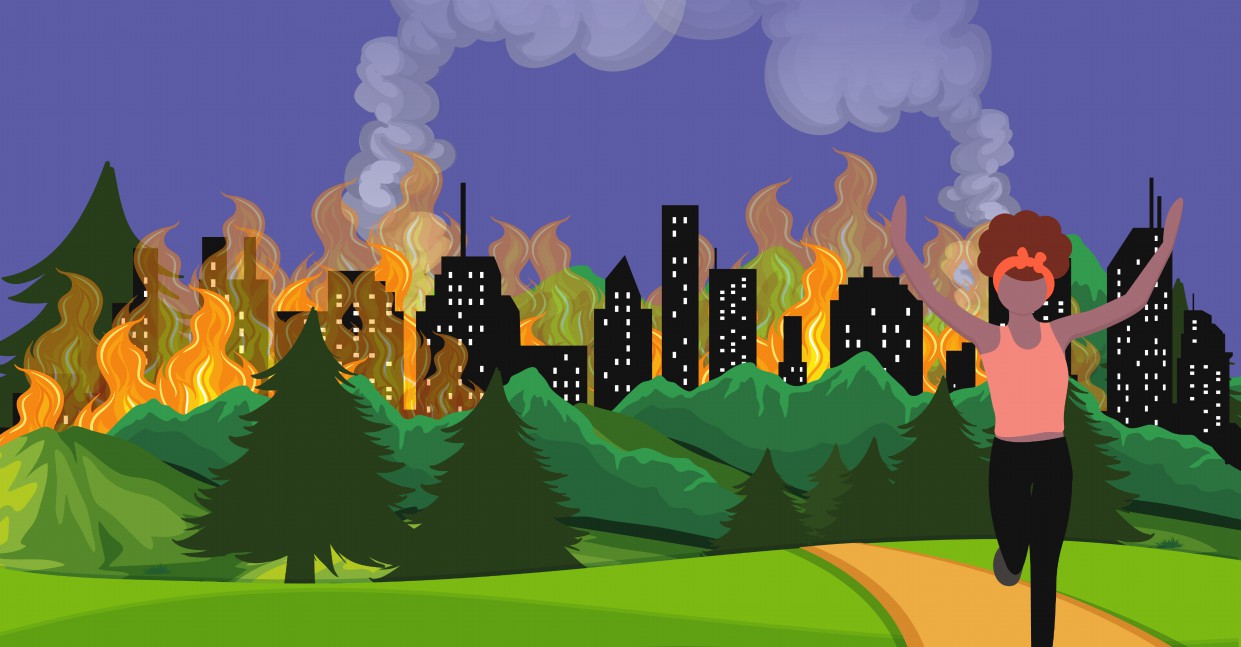This is the weekly column written by Blavity:Politics Senior Editor Kandist Mallett.
I woke up to a loud noise coming from somewhere in my neighborhood at 4 a.m. on Friday morning. At first, I didn’t think too much of it; in neighborhoods like mine, near Downtown Los Angeles, it’s not unusual for some loud noise to wake me up in the middle of the night. But something this time told me to look out the window, and good thing I did. A car near my house was on fire, and thank goodness it wasn’t windy, or things could have gotten bad real quick.
I initially ran through the list of what I needed to grab first. A number of different valuables, like my passport and cash, came to mind. Fortunately, my panic subsided when I heard the noise of firetrucks coming down my street. The fire was eventually contained, but what started it is still unknown. In California, though, fires like those can cause whole neighborhoods to be destroyed.
Not being able to go back to sleep, I checked Twitter and discovered that two major fires were happening in other parts of the Greater Los Angeles area. A major evacuation was declared for the Saddleridge Fire in Sylmar, which is near Los Angeles. At the time of writing this, a mandatory evacuation has been ordered, and the fire is 0% contained.
On the other side of the valley, near Malibu and Thousand Oaks, the Wendy Fire was also occurring. Last year, the Woosley Fire destroyed hundreds of homes and displaced many families, including mine. It was terrifying not knowing whether or not my family’s home would be okay. And while the current Wendy Fire seems to be mostly controlled, the concern for my family's safety as California begins another wildfire season is heightening.
Strong winds and dry terrain mean that even the little car fire I witnessed earlier in the morning has the potential to start a major spread of fire. Wildfires have become more of a constant threat to Californians than the other natural disaster California residents are taught from an early age to be afraid of: earthquakes.
Although there are natural causes for wildfires, the ones we’ve been seeing in the last few years are a direct result of the current climate crisis.
In Northern California, PG&E, one of the state's largest energy suppliers, left up to 600,000 residents without power Thursday as they conducted a maintenance check. Last year, the company's faulty power lines were to blame for California’s largest fire to date: the Camp Fire.
PG&E has come under scrutiny for its choice to choose profit over safety and for not taking better care of its power lines over the years. So, in some kind of Purge scenario or from a page out of Parable for the Sower, residents have been left without power and are now forced to fend for themselves.
What we've seen in the Bay Area with the PG&E blackout is that these major corporations that have a monopoly on our energy, as well as our government officials, are not prepared to handle the responsibility. According to the Associated Press, a 60-year-old man who was dependent on his oxygen tank died 12 minutes after PG&E turned the power off. If it was well-known that this maintenance needed to happen, then why not give consumers a heads-up? Why not make sure that those whose lives depend on having energy were well-prepared for the blackout?
The climate crisis has created a new normal, one that we have yet to fully cope with. Hillside fires, thousands of acres burning, and images of drivers dodging the waves of fire engulfing freeways are becoming our dystopian reality.
